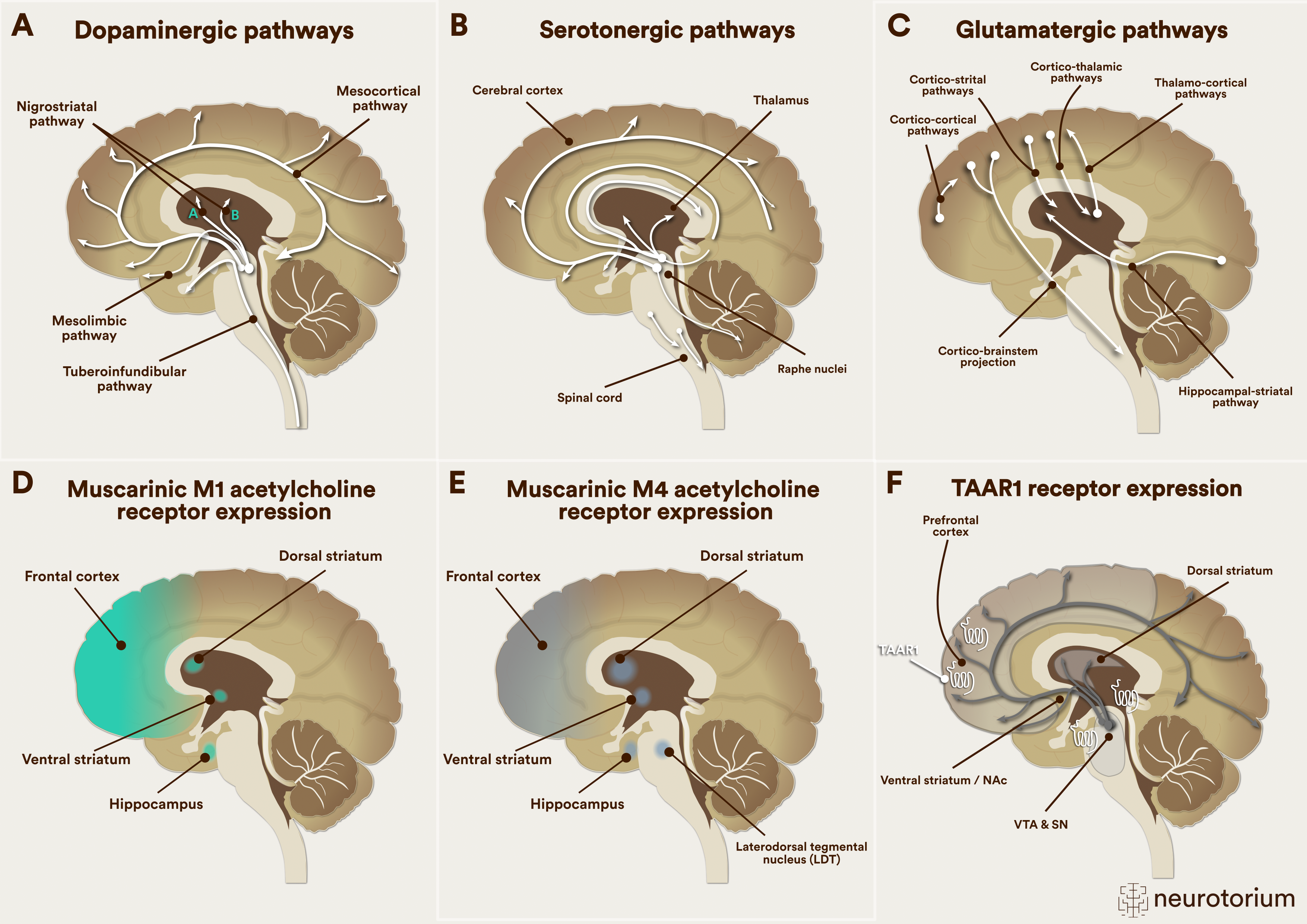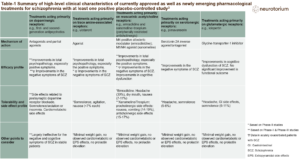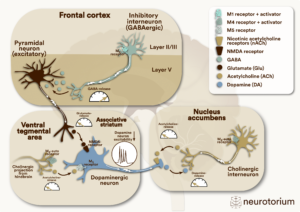LDT=Laterodorsal tegmental nucleus; NAc = Nucleus Accumbens; SN = Substantia Nigra; VTA = Ventral Tegmental Area
A. Dopaminergic pathways are involved in positive, negative, and cognitive symptoms of schizophrenia and are affected by currently available first- and second-generation antipsychotics that act as dopamine antagonists or partial agonists and target psychosis.
B. Serotonergic pathways are involved in mood and psychosis and are affected by currently available second-generation antipsychotics that act as antagonists and/or partial agonists at several different serotonin receptors and target psychosis and mood symptoms.
C. Glutamatergic pathways are involved in positive, negative, and cognitive symptoms of schizophrenia and are affected by the M1/M4 receptor agonist xanomeline+tropsium targeting psychosis, and the glycine transporter-1 inhibitor, iclepertin, and the d-amino acid oxidase (DAOO) inhibitor luvadaxistat, each targeting cognition.
D. Muscarinic M1 acetylcholine pathways are involved in positive and cognitive symptoms of schizophrenia and are affected by the M1/M4 receptor agonist xanomeline+tropsium targeting psychosis and cognition.
E. Muscarinic M4 acetylcholine pathways are involved in positive symptoms of schizophrenia and are affected by the M1/M4 receptor agonist xanomeline+tropsium and by the M4 positive allosteric modulator (PAM) emraclidine, each targeting psychosis
F. The trace amine-associated receptor 1 (TAAR-1) system is mainly located intracellularly and interacts with trace amines, also called ”false” neurotransmitters, as they are not released from presynaptic terminals to stimulate postsynaptic receptors; instead when stimulated by trace amines or pharmacologic agonists, TAAR-1 receptors form heterodimer complexes with presynaptic and postsynaptic dopamine receptors, enhancing presynaptic dopamine autoreceptor activity, thereby reducing presynaptic dopamine synthesis, and reducing postsynaptic dopamine receptor availability and affinity for dopamine, reducing psychosis.
Read more about Novel and Emerging Pharmacologic Treatments for Schizophrenia





